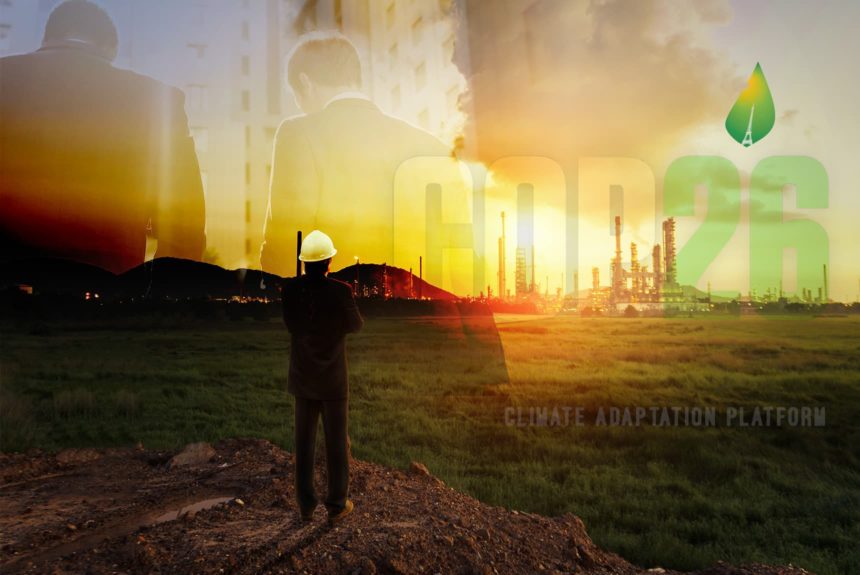As world leaders gather for COP26 to set the path for a net-zero 2050, the world faces an “energy scare.” The prices for fossil fuels, oil, coal, and gas rose by 95 per cent.
The economic recovery from the pandemic has increased energy demands, and renewable energy is not enough to meet the rising needs.
According to CNBC, a market report from the IEA shows that although renewable energy is set to rise to 8% this year and over 6% in 2022, it can’t keep up with increasing demand.
It is expected to serve only half of the projected growth in global demand in 2021 and 2022. However, fossil fuel-based electricity generation will cover 45% of the additional market in 2021 and 40% in 2022.
At the global level, IEA’s latest report expects coal-fired electricity generation to rise by almost 5% in 2021 and a further 3% in 2022, after declining by 4.6% in 2020. As a result, coal-fired electricity generation is set to exceed pre-pandemic levels in 2021 and reach an all-time high in 2022 (Frangoul, 2021).
Energy shortage and insufficient renewable energy to meet demands will make markets vulnerable to shocks.
The Economist article, “The first big energy shock of the green era”, says that the panic caused by the current energy shortage is a “reminder that modern life needs abundant energy: without it, bills become unaffordable, homes freeze, and businesses stall. The panic has also exposed deeper problems as the world shifts to a cleaner energy system, including inadequate investment in renewables and some transition from fossil fuels, rising geopolitical risks and flimsy safety buffers in power markets. Without rapid reforms, there will be more energy crises and, perhaps, a popular revolt against climate policies.”
But what caused the energy shortage and the subsequent spike in fossil fuel prices in the first place?
Verrender (2021) reports several events led to the recent energy fallout. He said:
- First, extreme weather, particularly the northern hemisphere’s long winter followed by a scorching summer, drove up energy and gas demands. These happened during the first and second waves of the COVID-19 pandemic, which slowed down the global economy and decreased fuel demands and production.
- Secondly, Hurricane Ida ravaged the Gulf of Mexico and disrupted up to 96 per cent of the region’s oil and gas production.
- China’s ban on Australian coal has also led to extensive blackouts and energy shortages since January. To fill the energy supply gap, the government turned to liquefied natural gas supplied by Russia, which has partly affected the supply shortages in Europe.
- Finally, there have been divestments in coal, oil, and, to a lesser extent, gas, while there has been a boost in renewable energy investments in response to the climate change crisis.
According to The Economist, Geopolitics also affected the supply shortage. Wealthy governments that stopped producing fossil fuels have moved production and supplies to autocratic countries like Russia and China, with fewer regulations and lower costs. However, this move will increase the oil output from Russia and OPEC (The first big energy, 2021).
Russia will open its Nord Stream 2 pipeline to supply natural gas to Europe. However, the pipeline faces various oppositions, first from European lawmakers who don’t want to see the country’s leverage increase. On the other hand, the US doesn’t want Europe to depend on Russia too much, but hasn’t done much to halt the project under President Biden’s administration. At the same time, neighbouring countries Poland and Ukraine are citing energy security concerns against the pipeline (Amaro, 2021).
How should governments deal with the energy shortage without compromising the transition to renewables?
The first considerable energy (2021) proposes the following solutions governments can implement to deal with the supply shortage. The first is to redesign energy markets and place sufficient energy buffers to absorb deficits and cope with the intermittency of renewable power. Second, energy suppliers should hold more reserves of gas. At the same time, governments improve battery, hydrogen, and carbon capture technologies and expand nuclear plants that will be vital to the transition to clean and reliable power.
The current energy disruption will reveal governments’ commitment to the climate issue, and the response could go either way.
Will they see the green transition as a threat to energy security, or should it push them to accelerate the energy transition in the urgent fight against climate change?
For further reading on the current energy shortage, click on the sources we have cited below:
Source Citation:
The first big energy shock of the green era (2021, October 16). The Economist. Retrieved from https://www.economist.com/leaders/2021/10/16/the-first-big-energy-shock-of-the-green-era
Amaro, S. (2021, October 8). Nord Stream 2: The Russian pipeline that everybody’s talking about. CNBC. Retrieved from https://www.cnbc.com/2021/10/18/nord-stream-2-the-russian-pipeline-that-everybodys-talking-about.html
Verrender, I. (2021, October 18). All energy crisis is looming, and it could cost as us all as stagflation prepares to make a comeback. ABC News. Retrieved from https://www.abc.net.au/news/2021-10-18/global-energy-crisis-could-cost-us-all-as-stagflation-returns/100546402
Frangoul, A. (2021, July 15). Renewable electricity generation is growing- but it’s not enough to meet rising demand, IEA says. CNBC. Retrieved from https://www.cnbc.com/2021/07/15/renewable-generation-growing-but-not-enough-to-meet-demand-iea-says.html



Leave a Reply